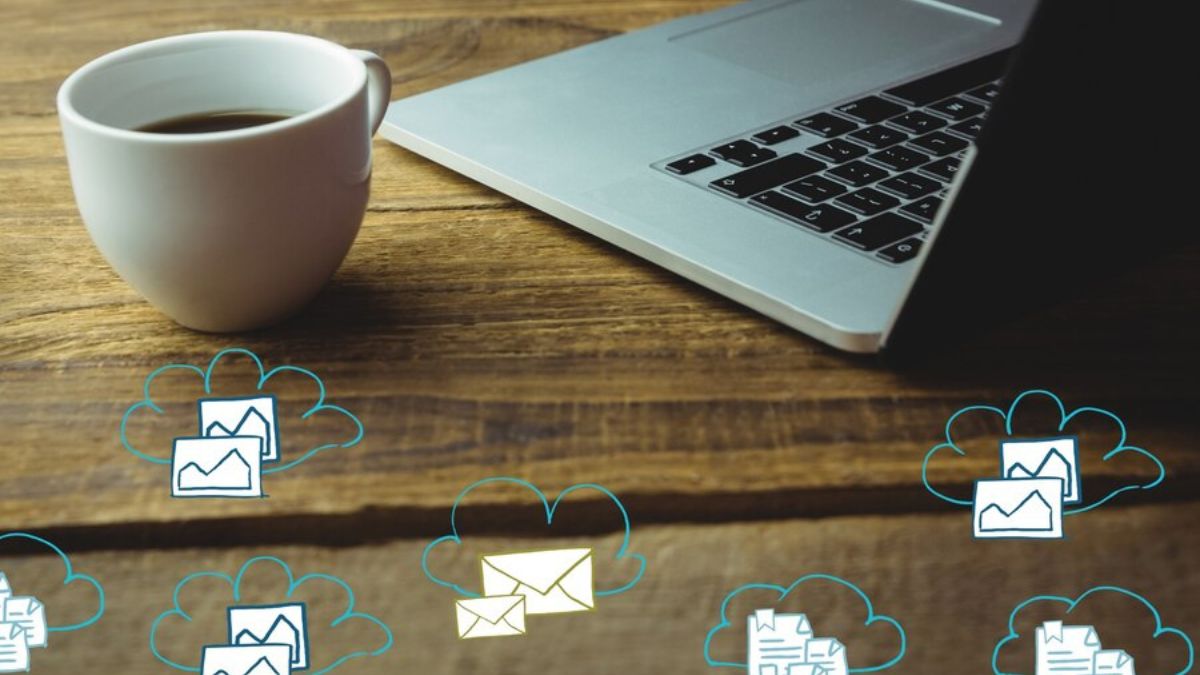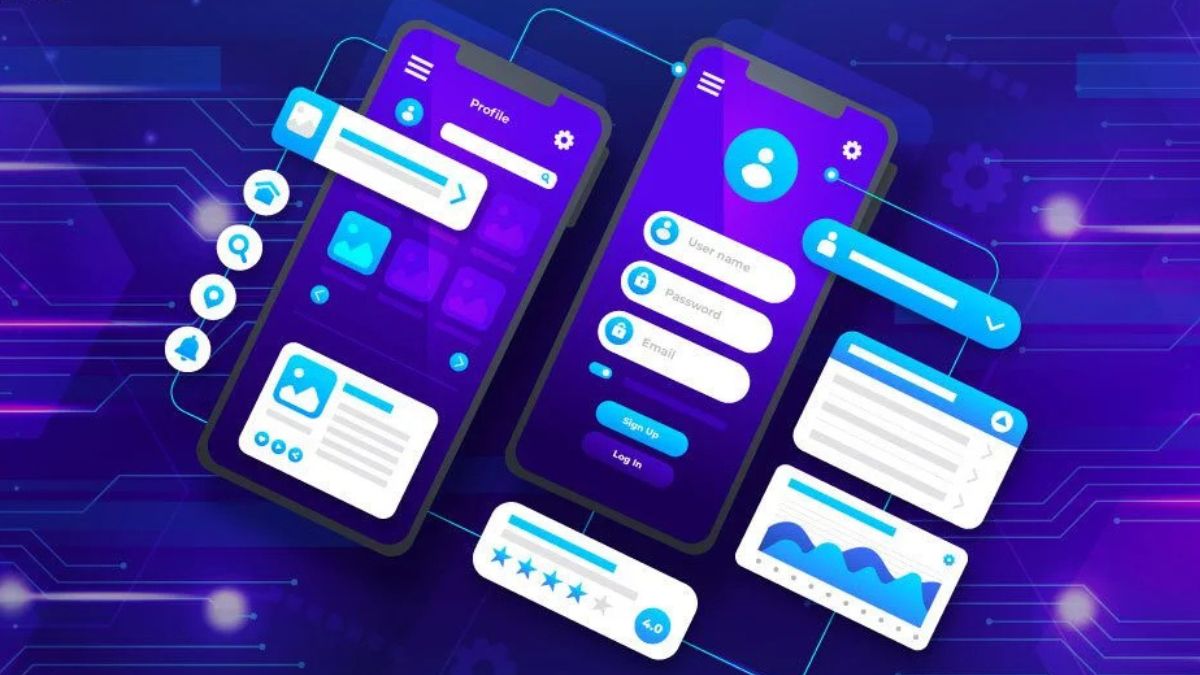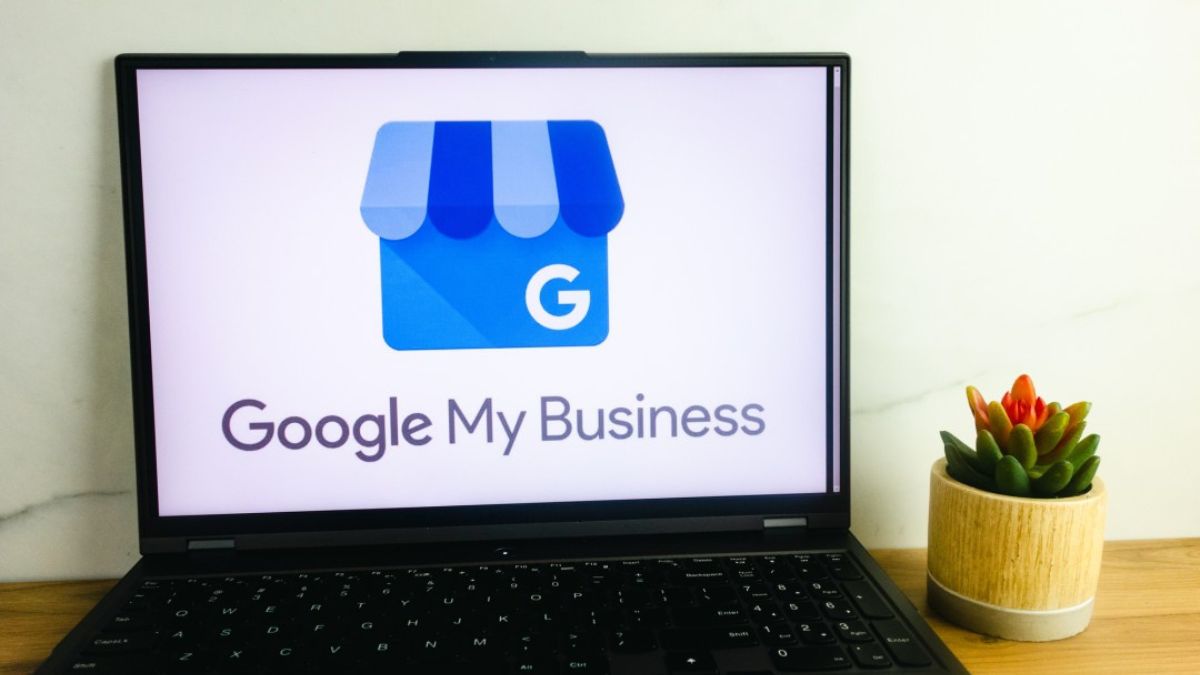BUSINESS
Steps to Revolutionize Your Business with Cold Email Automations

Reaching potential clients, partners, or investors is exactly what the company needs for further growth. One of the best ways to do this is through a cold email campaign. However, sending emails manually can be time-consuming and less productive. That is where cold email automation enters the picture. With the help of cold email automation, you can scale your outreach, save time, and hence enhance business performance.
This article will guide you through the essentials to revolutionize your business with cold email automation. This will be the right guide to streamlining your communication processes and maximizing your business growth.
-
Choose the Right Email Automation Tool
To get the most out of cold email automation, you need a reliable tool that fits your needs. Popular email automation tools have features such as automated follow-up, personalized email sequences, A/B testing, and reporting. Choose one that can support your scale-out outreach while keeping the human touch in every email.
-
Define Your Goals and Objectives
Before you dive into cold email automation, it’s essential to establish clear goals. Ask yourself:
- What do you want to achieve with cold emails?
- Are you looking to generate leads, schedule meetings, or build relationships?
- Who is your target audience?
By answering these questions, you would be better positioned to come up with a targeted strategy aligned with the objectives you have for your business. Based on this, the defined objectives are easy to use for measuring campaign success and making required adjustments.
-
Build a High-Quality Email List
A quality email list forms the foundation of any successful cold email campaign. The more targeted your list, the higher your chances of receiving engagements, because the right people will receive your emails. To create a solid email list:
- Use tools like LinkedIn, databases, or web scraping tools.
- Segment the leads on factors such as industry, job, location, and pain points; the outreach will then become more targeted and relevant.
- Groom the list of clean invalid or outdated contacts to increase deliverability rates.
-
Create a Compelling Email Sequence
One of the most important parts of cold email automation is the construction of a productive email sequence. A successful email should create value immediately in the first message yet be as brief and pertinent as possible. Usually, a structured email sequence comprises:
- Initial Outreach: Introduce yourself and explain why you’re reaching out, focusing on the value you can offer the recipient.
- Follow-Up 1: If there is no response, send a polite follow-up email emphasizing the value of your proposition and asking for a brief conversation.
- Follow-Up 2: If the recipient still hasn’t responded, send another follow-up, but this time offer something more enticing, such as a free trial or consultation.
- Final Follow-Up: Make one last attempt with a subject line that encourages a final call to action (CTA), offering a limited-time opportunity or unique benefit.
Each email should feel personal, relevant, and non-spammy. Make sure you personalize the subject line, the body content, and the CTA to align with the recipient’s needs and interests.
-
Segment Your Audience for Better Personalization
Personalization plays a key role in cold email campaigns. If you segment your email list, you can communicate your message more specifically to specific types of prospects. For example, if you’re targeting multiple industries, the way you write the email should differ. Then again, in terms of communicating with decision-makers versus influencers, your tone and content will also vary.
Automation through cold email can easily make segmentations as they allow the generation of different sequences of emails towards different groups of recipients, so every recipient gets his or her desired email based on their interest.
-
Set Up Automated Follow-Ups
One of the more valuable things with cold email automation is that you can program automated follow-up emails to get sent after set periods. Researchers and studies showed that it takes approximately 5-7 touch points to respond to the lead. With automation, you can arrange multiple follow-up emails without necessarily sending one yourself.
Automated follow-ups usually occur a few days apart so that recipients are given enough time to respond. If they still haven’t responded after several touchpoints, you can then stop or modify your approach.
-
A/B Test Your Emails
The cold emails you will compose should be the best to produce the optimal outcomes by ensuring A/B testing. A/B testing enables the determination of the ideal subject lines and messaging to get the right action from CTAs and which forms of emails work best for your target audiences. Gradually, with gathered data, adjust your approach appropriately.
-
Monitor Analytics and Adjust Campaigns
Once you set up your cold email campaign, track key metrics such as open rates, click-through rates, responses, and conversion rates. These will inform you on what is working and what needs to change.
Most cold email automation allows for an in-depth analytics dashboard, helping you analyze the campaign’s performance. Use this information to refine your strategy to maximize results. Adjust your messaging, targeting, and follow-up frequency accordingly.
-
Comply with Email Regulations
While automation is an effective tool, it’s equally important to keep in mind regulations like the CAN-SPAM Act, GDPR, and many others. Lack of this could lead to fines and a blow to your brand’s reputation. Don’t forget:
- Include an unsubscribe link in all your emails.
- Ensure that the recipient’s data is handled securely and with their consent.
- Avoid sending emails too frequently or without permission.
-
Scale Your Efforts
Now, once you’ve refined the process for cold email automation, it becomes easier to scale it across more people. Once your campaigns start improving, you can tackle even more leads and automate parts of your outreach to deliver higher conversion rates. The thing with scaling is that you now focus on those activities that would drive more deals, such as closing deals, building long-term relationships, etc.
FAQs
- How can cold email automation improve my response rates?
Cold email automation increases consistency and follow-up frequency, allowing you to reach more prospects with tailored messages. Automated follow-ups ensure you stay on a lead’s radar without manual effort.
- Can I use cold email automation for both B2B and B2C outreach?
Yes, cold email automation works for both B2B and B2C campaigns. The key is to personalize your approach based on the target audience’s needs and interests.
- How do I ensure my emails don’t end up in spam?
To avoid the spam folder, use high-quality email lists, personalize emails, include a clear unsubscribe option, and follow best email practices such as avoiding excessive links or spammy words.
Conclusion
Cold email automation is a resource every modern business requires, considering expansion, saving time, and improving overall efficiency. By setting up clear goals, segmenting your audience, personalizing your messages, and using the right tools, you can catapult your business into a new dimension of growth. The best approach to automation is strategically doing it, with continuous campaign testing and optimizing to achieve maximum output. Embrace cold email automation and enjoy how your business blooms.
BUSINESS
The Benefits of Choosing a Quality Local Fuel Supplier

When it comes to powering your home or business, the quality of the fuel you use can have significant impacts not only on your equipment but on the broader community and the environment. Local fuel suppliers offer a wealth of benefits, from improved service quality to the preservation of regional economies. They also tend to have a more considerable commitment to sustainability and the communities they serve. Below, we will delve into the numerous advantages that choosing a local fuel supplier can bring to you and your community. Keep reading to discover why making this choice can be beneficial in more ways than one.
Exploring the Advantages of Local Fuel Suppliers for Community and Environment
Selecting a local fuel supplier can offer several community-oriented advantages. By choosing to support a local business, consumers contribute to creating and maintaining jobs within their community. This circulation of money helps to stimulate local economic growth and strengthen community ties. Moreover, local suppliers are often more in tune with regional needs and tend to be heavily invested in local affairs, ensuring they actively participate in community development.
From an environmental standpoint, sourcing fuel locally can reduce the carbon footprint associated with transporting fuels over long distances. By decreasing the miles fuel travels, emissions are cut down significantly, which contributes to better air quality and reduced greenhouse gas emissions. Local fuel providers are also more likely to adopt environmentally friendly practices due to their closer interaction with the communities that hold them accountable.
Furthermore, by supporting a fuel supplier in Calgary, for example, consumers support the preservation of local landscapes and ecosystems. These businesses often have a vested interest in maintaining the natural beauty and health of the regions they serve, which can lead to more sustainable business practices and conservation efforts.
Personalized Service From Your Local Fuel Supplier
One of the chief perks of working with a local fuel supplier is the personalized service they can offer. Unlike larger corporations, local suppliers are more likely to get to know their customers on a personal level. This enables them to understand and accommodate unique preferences and requirements, such as specialized delivery times or particular payment plans.
Such suppliers tend to value long-term relationships with their customers, which translates to exceptional customer service. By dealing directly with a local company, customers can avoid the impersonal nature of large call centers and receive meaningful, attentive service every time they need assistance.
In addition, local fuel suppliers are often more flexible and willing to go the extra mile to ensure customer satisfaction. Whether accommodating an urgent delivery or offering expert advice on fuel management, they are more attuned to their customers’ needs.
The Impact of Local Fuel Suppliers on Emergency Response Times
In the event of an emergency, the response time of your fuel supplier can be critical. Local fuel providers have an intrinsic advantage in this area due to their proximity to their clients. Since they operate within a smaller region, they can dispatch fuel deliveries much faster than suppliers who have to coordinate across larger distances.
Additionally, local suppliers often maintain more comprehensive knowledge of the area’s roadways, traffic patterns, and potential obstacles. This geographic awareness allows them to navigate the fastest and most reliable routes during emergencies, ultimately reducing downtime for customers.
Emergencies can also cause sudden increases in demand for fuel, and local suppliers are usually better equipped to handle these spikes. Their familiarity with the customer base and inventory management is tailored to the area’s typical needs, which allows them to react swiftly and effectively in crisis situations.
Supporting the Local Economy by Choosing a Local Fuel Provider
Choosing a local fuel provider means more than just receiving a service; it’s about supporting the local economy. When you engage with a local supplier, you are ensuring that your money is reinvested into the local economy, contributing to its growth and stability. This financial boost can lead to more vibrant communities, new jobs, and increased prosperity for local residents.
Additionally, local businesses, including fuel suppliers, are known to support each other. This interdependence creates a diverse and resilient local business community that can withstand economic fluctuations better than one dominated by large, non-local companies.
Overall, the benefits of choosing a quality local fuel supplier extend far beyond the immediate convenience and reliability they offer. They contribute significantly to community cohesion, environmental sustainability, and economic prosperity. By opting for a local source for your fuel needs, you engage in a choice that has positive ripple effects for yourself, your neighbors, and future generations.
BUSINESS
Implementing Spotlight UI Techniques: Drawing User Attention to Key Features and Content

Capturing users’ attention and guiding them to key features is critical to creating a seamless app experience. Spotlight UI techniques effectively achieve this by subtly highlighting important elements without overwhelming the user. These techniques draw attention to specific content, allowing users to discover essential features effortlessly.
As a result, the overall user journey becomes smoother, engagement increases, and users are more likely to interact with your app meaningfully. In this article, we’ll delve into how to implement spotlight UI techniques to enhance user experience and improve feature discovery.
What is Spotlight UI?
Spotlight UI is a design technique used to draw a user’s attention to important elements within an app or website. It highlights specific interface parts to ensure that users notice key features or content. This can be done in several ways, such as dimming the background, adding animations, or enlarging the element you want to focus on.
For example, when you open an app, you might see a message or pop-up that draws your attention to a new feature or update. This is a spotlight UI technique in action. It ensures that the most important information stands out, guiding the user to focus on it without overwhelming them with too much at once. The goal is to subtly direct the user’s attention to key content in a way that’s clear but not distracting.
Importance of Spotlight UI Techniques
Spotlight UI is more than just a visual enhancement. It plays a crucial role in improving the overall user experience by making content easier to find and interact with. Here are a few reasons why spotlight UI techniques are essential for app design:
- Improved Focus: Users often have limited attention spans, and apps can become overwhelming if too much information competes for attention. Spotlight UI techniques help direct the user’s focus to specific elements, reducing cognitive overload.
- Enhanced Navigation: Spotlight UI makes navigation more intuitive by guiding users through key features or sections of your app. It can highlight buttons, new features, or essential updates, helping users find what they need quickly.
- Increased Engagement: When users can easily spot important elements in your app, they’re more likely to interact with them. Spotlight UI ensures that your most crucial content, such as new features or special offers, catches the user’s eye immediately. By making key elements stand out, you increase the chances that users will engage with your app more deeply.
- Streamlined User Onboarding: Spotlight UI is especially helpful for new users. It can guide them through essential features, making the onboarding process smoother. With clear visual cues, users quickly understand how to use your app, reducing confusion and improving their experience. This simple yet powerful technique ensures that new users immediately grasp the app’s core functions.
Techniques for Implementing Spotlight UI
Spotlight UI techniques can vary depending on the app’s design, user flow, and goals. However, several core techniques are widely used to guide user attention.
1. Dimming the Background
One of the most effective ways to spotlight key elements is by dimming the background. This method focuses the user’s attention on the highlighted element by reducing distractions. For example, when presenting a new feature or notification, you can dim the rest of the screen while brightly highlighting the feature. This approach works well for onboarding screens, pop-up messages, or any important updates that need immediate attention.
2. Pulsing or Animating Elements
Another common spotlight UI technique is to animate or pulse the element you want users to notice. A subtle pulsing effect or a smooth animation can draw the eye without being too disruptive. This technique is especially effective for guiding users to specific buttons or calls to action (CTAs), encouraging them to take action.
For example, a “Sign Up” button may pulse gently to attract the user’s attention, prompting them to complete the sign-up process. This creates a dynamic feel that makes the app more engaging.
3. Tooltips and Modals
Tooltips and modals are another way to implement spotlight UI. These small, informative pop-ups help users understand a feature or prompt them to take action. A tooltip might appear when a user hovers over or taps an element, explaining what it does or offering a helpful tip. Conversely, modals can be used for more important information, such as announcements or key updates.
4. Callouts and Hotspots
Callouts highlight specific screen areas by drawing a visual cue to a specific section. This could be a small arrow pointing to a particular feature or a highlighted area with descriptive text. Similar to callouts, hotspots are areas within the app where user interaction is encouraged, such as buttons or icons. Spotlight UI can make these hotspots more prominent, making it easier for users to understand where to click or tap.
How Spotlight UI Enhances the User Experience
Here’s how the spotlight UI techniques contribute to a more streamlined user journey:
1. Reducing Cognitive Load
One of the biggest challenges in app design is reducing cognitive load. Spotlight UI techniques can help minimize distractions by guiding users’ attention to the most important areas. When users aren’t overwhelmed with information, they can focus on completing tasks more efficiently. For instance, when onboarding new users, spotlight UI can guide them step-by-step, ensuring they aren’t simultaneously bombarded with unnecessary features.
2. Enhancing Feature Discovery
Apps’ great features often go unnoticed simply because they aren’t easy to find. Spotlight UI helps solve this problem by drawing attention to key features in a non-intrusive way. Whether it’s a new button, feature, or update, spotlight UI ensures that users don’t miss out on important app elements.
3. Improving App Navigation
Spotlight UI techniques also enhance app navigation by guiding users to the next step in their journey. For example, if a user has completed a particular task, the spotlight UI can direct them to the next step or feature they should explore. This helps users feel more confident as they move through the app, knowing exactly where to go next.
Implementing Spotlight UI in Your App
Successfully integrating spotlight UI techniques into your app requires thoughtful design and implementation. Here’s how you can get started:
- Choose Key Features to Highlight: Identify the features or content you want to spotlight. It could include new features, special promotions, or essential app functionality.
- Create a Balanced Design: While spotlight UI is designed to grab attention, it’s important not to overwhelm the user. Use subtle effects like dimming the background or gentle animations to keep the design clean and user-friendly.
- Test and Iterate: Implementing the spotlight UI is an iterative process. Test different techniques to see which resonates most with your users. A/B testing can be especially useful in determining the most effective ways to use spotlight UI.
Conclusion
Spotlight UI techniques are effective for drawing attention to key features and content in your app. These techniques enhance the overall user experience, improve engagement, and streamline navigation by guiding users to the most important elements without overwhelming them. With a thoughtful approach, spotlight UI can help users discover new features, complete tasks more efficiently, and feel more connected to your app.
If you’re looking for a seamless way to implement these techniques, Plotline offers powerful tools to elevate your app’s user experience. With customizable UI elements, including spotlight features, Plotline enables you to create dynamic, engaging experiences without requiring deep technical knowledge.
BUSINESS
The Ultimate Guide To Google Business Profile Optimization For Pest Control

Managing your Google Business Profile can feel like swatting flies. However, a well-optimized profile holds power for your pest control business. When customers search for pest control services, you want your business to appear at the top. This is where seo for pest control becomes crucial. It’s not just about having a presence but making sure it draws attention. Precise details, captivating photos, and genuine reviews all play a role. You want potential customers to trust your service. This guide will show you how to optimize your profile effectively. You will learn to enhance visibility, connect with more customers, and ultimately boost your business. With clear steps, you’ll gain the tools to make your business more discoverable. Each element of your profile will be addressed, ensuring you capitalize on local searches. Let’s get started on making your pest control business the go-to choice in your community.
Claim and Verify Your Business
First, claim your business on Google. This step is essential for controlling the information shown to potential customers. Visit the Google Support page for detailed instructions on claiming and verifying your business. Once claimed, make sure to verify your business. It’s the foundation of a credible profile.
Fill Out Your Profile Completely
Make sure every section is filled out carefully. Add your business name, address, and phone number. Consistency is key. Ensure it matches what’s on your website and other listings. Add your service areas and operating hours. Include a brief description of your services. A well-written description helps potential customers understand what you offer.
Add Photos and Videos
High-quality photos create a strong first impression. Include images of your team, equipment, and successful pest control jobs. Videos can also be effective. A quick tour of your business or a demonstration of your services can engage visitors. Regular updates keep your profile fresh and inviting.
Encourage Customer Reviews
Reviews influence decisions. Ask satisfied customers to leave reviews. Respond to reviews promptly. Thank positive reviewers and address concerns raised in negative reviews. This interaction shows you care about your customers and value feedback.
Utilize Posts and Updates
Google My Business allows you to share posts. Use this feature to announce special offers, changes in services, or business events. Keep posts relevant and concise. Regular updates keep your audience informed and engaged.
Insights and Performance Tracking
Use the insights feature to understand how customers find your business. Look at search terms and the actions taken on your profile. This data helps refine your strategy and improve your online presence.
Comparison Table: Key Features
| Feature | Importance | Action |
| Claim and Verify | High | Claim and verify your profile for authenticity |
| Complete Profile | High | Fill out all sections accurately |
| Photos and Videos | Medium | Regularly update with quality images |
| Customer Reviews | High | Encourage and respond to reviews |
| Posts and Updates | Medium | Keep customers informed with regular updates |
| Insights | Medium | Analyze performance to optimize strategy |
Stay Compliant with Google Guidelines
Follow Google’s guidelines to avoid penalties. Ensure your profile represents your business accurately. Avoid misleading information or keyword stuffing. It’s important to present honest and clear information to maintain trust.
Conclusion
Optimizing your Google Business Profile is not just a task. It’s an ongoing process. By following these steps, your pest control service will become more visible to those in need. Engage your community and respond to their needs. Watch your business grow as your profile becomes a trusted source for pest control solutions.
-

 FASHION10 months ago
FASHION10 months agoElegant Winter Party Style: Trendy Long-Sleeve Dresses and Essential Hair Care Tips
-

 HOME11 months ago
HOME11 months agoThe Impact of thejavasea.me Leaks AIO-TLP Users: A Comprehensive Guide
-

 BUSINESS9 months ago
BUSINESS9 months agoHOW TO SHOP GOODWILL OUTLET STORE
-

 SKINCARE&BEAUTY5 months ago
SKINCARE&BEAUTY5 months agoCeylan Eye Cream Reviews: Real Results from Real Users
-

 HOME5 months ago
HOME5 months agoTributePrintedPics Review: A Deep Dive into Quality, Design, and Customer Experience
-

 CULTURE5 months ago
CULTURE5 months agoUncuymaza Unveiled: The Cultural Significance Behind the Craft
-

 LIFESTYLE4 months ago
LIFESTYLE4 months agoDiscovering Luuxly.com: Your Ultimate Guide to Luxury Lifestyle
-

 TECHNOLOGY5 months ago
TECHNOLOGY5 months agoztec100.com: Your Ultimate Guide to Cutting-Edge Tech Solutions
